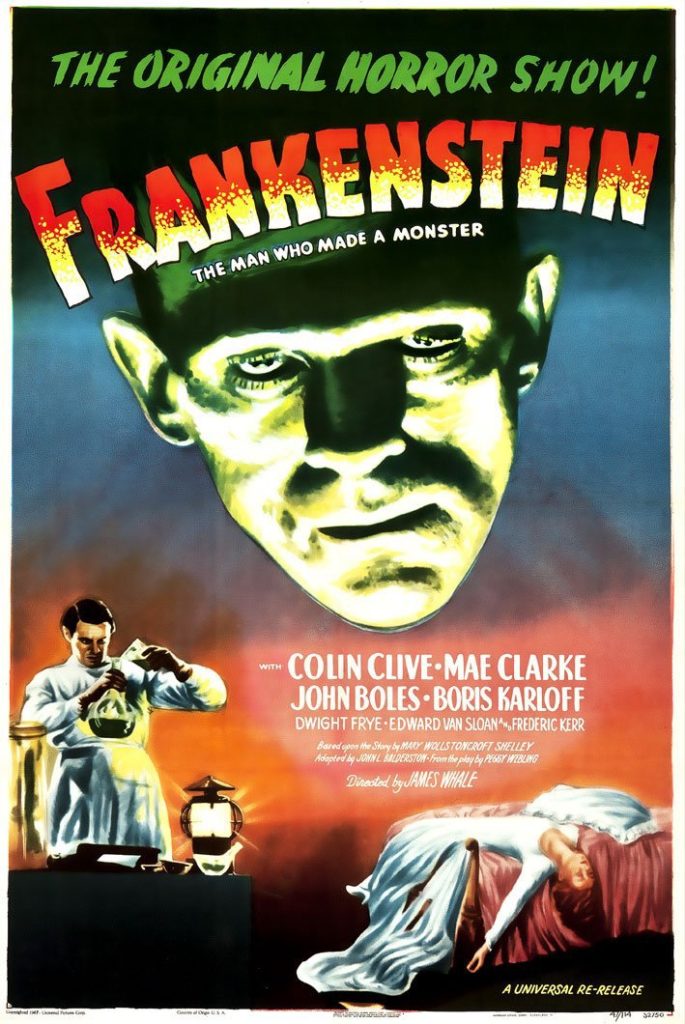Frankenstein’s Monster (BLM) Terrorizes the Village

Boomers (most of whom who never read Mary Shelley’s 1818 novel) remember the 1931 movie version of Frankenstein, famously starring Boris Karloff. Back in the day, when Marvel was a comic book brand rather than a movie franchise, and before special effects replaced plot lines and characters in cinema, low-budget horror flicks passed as entertainment. Frankenstein’s monster, Dracula, and Wolf Man were staples of TV re-runs. The once-familiar story of Frankenstein’s monster, it occurred to me, provides an eerie metaphor for the crazy rhetoric that has gripped our society.
First, a brief stroll down memory lane. In the movie (unlike the book), Henry Frankenstein is a mad scientist who believes that he can create a living creature from body parts retrieved from freshly-dug graves and the corpses of criminals recovered from the gallows. With the help of his demented, hunchbacked assistant, Dr. Frankenstein sews together the various body parts in his laboratory, missing only a brain. His assistant, Fritz, drops the “normal” brain he had been tasked to steal, and without Dr. Frankenstein’s knowledge replaces it with a criminal’s brain. An electrical charge delivered in a lightning storm brings the now-completed creature to life, whereupon—corrupted by an evil brain—the monster terrorizes the village.

The metaphor is this: The component parts of what we collectively call “wokeness”—consisting of intersectionality, identity politics, critical race theory, diversity, inclusion, equity, social justice, anti-racism, etc.—are the cadavers of radicalism that died in the 1960s and 70s. Before getting adorned with new, pseudo-academic (and Orwellian) labels, the same underlying ideas animated the unsuccessful movements of radical feminism, Black Power, black separatism, reverse discrimination, Marxism, and revolutionary ideology espoused by domestic terrorist groups such as the Weather Underground, the Black Panthers, the Black Liberation Army, and other failed insurgents. These groups didn’t fail for a lack of effort. 1972 witnessed 1,900 domestic bombings in the United States.
They failed because Americans saw them for what they were: extremist movements seeking to overthrow our democratic order, which rests on a capitalist economy and a bourgeois culture. We buried these subversive groups and their radical rhetoric because they were violent, dangerous, and an existential threat to our national values.
Instead of hanging their leaders, however, we eventually paroled them and granted them teaching positions in our universities. There, like Dr. Frankenstein, they re-assembled the body parts into a monstrous new creature—woke ideology with its various labels and euphemistic slogans. But don’t be fooled. It is the same warmed-over revolutionary rhetoric that was launched—and was rejected—decades ago. This gruesome experiment took place, not in Dr. Frankenstein’s laboratory, but in America’s colleges and universities. The “mad scientist” was a group of post-modern intellectuals and Marxist-Leninist activists wishing to breath new life into a moribund revolutionary movement.
Instead of an electrical storm, the event that jolted the monster into action was the death of a drug-addled career criminal named George Floyd, while resisting arrest in Minneapolis on May 25, 2020. Overnight, a destructive menace referred to as Black Lives Matter was unleashed on America’s cities, provoking widespread rioting, arson, looting, and violent demonstrations.

In the movie Frankenstein, the carnage was relatively short-lived. The monster managed to kill Dr. Frankenstein’s assistant and a couple of other people before being trapped in a burning windmill. The villagers managed to kill the beast before it did any further damage. In the U.S., the beast continues to rampage a year and a half later, with no end in sight. I prefer the 1931 movie ending. Alas, in 2021, many of the villagers are on the monster’s side. It is unclear whether the monster will prevail.































